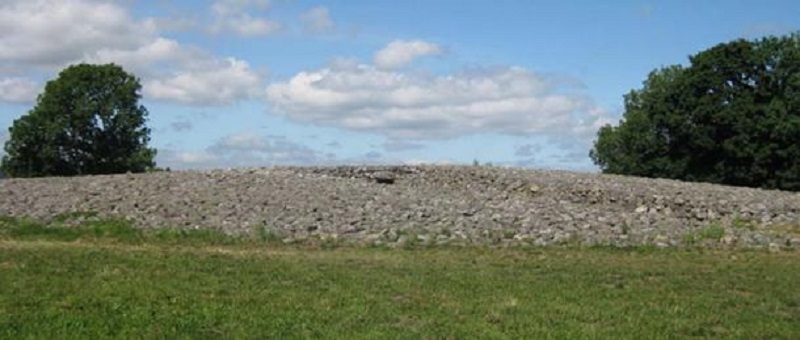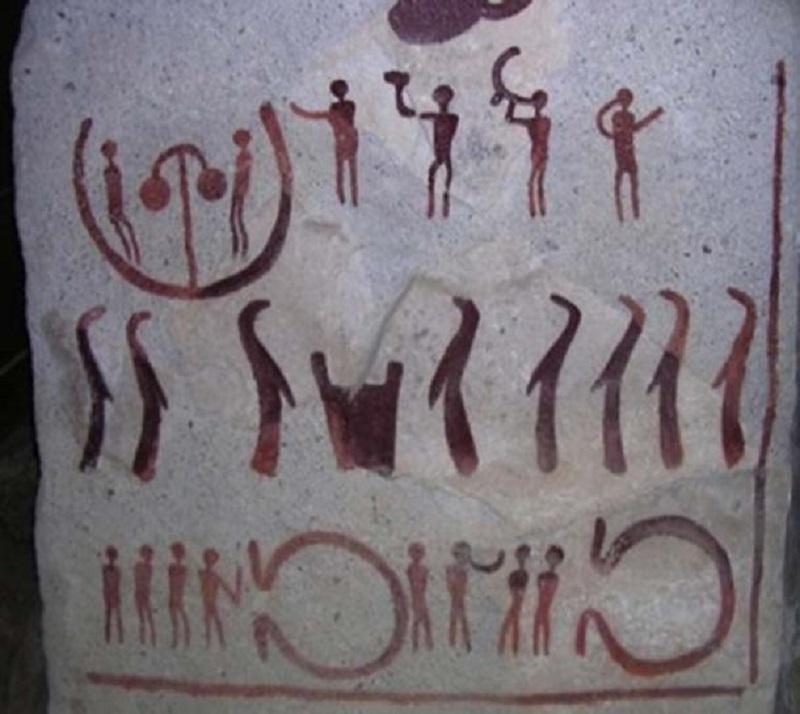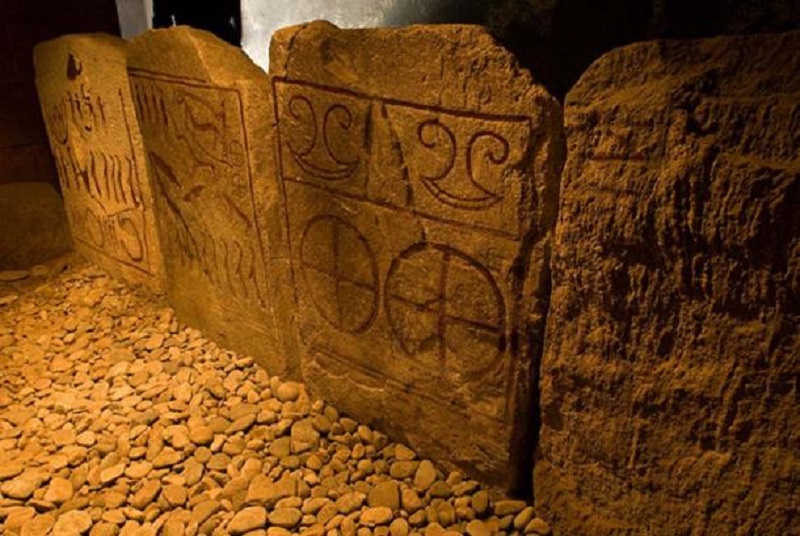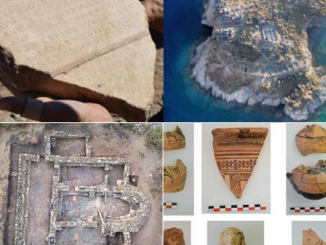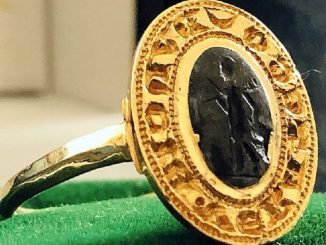In 1748, two farmers accidentally discovered an ancient stone tomb near the village of Kivik in southern Sweden while digging a quarry. The tomb, now known as Kivik Kungagraven (“King Kivik’s Tomb”), has since been rebuilt to its appearance when it was first built. It is known for having an elaborate burial chamber containing outstanding works of art denoting some religious ceremony. The tomb offers a glimpse into the level of social complexity and technological sophistication that existed in Bronze Age Scandinavia.
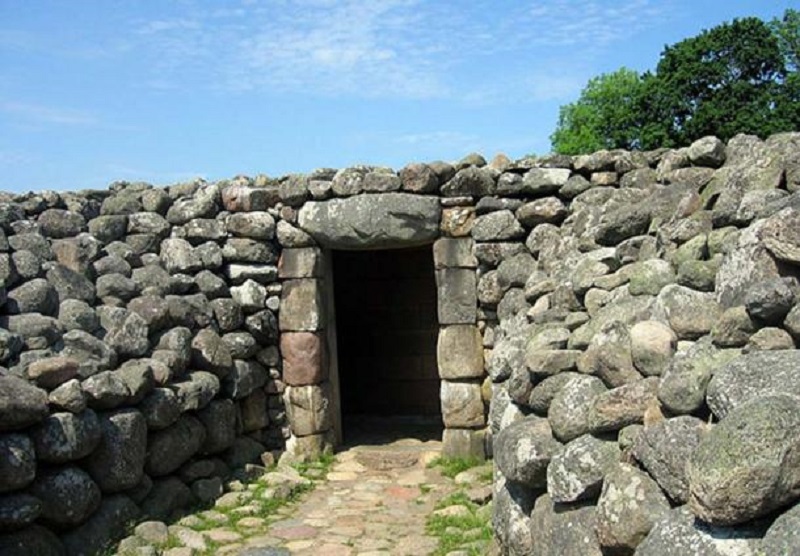
Entrance to the King’s Mausoleum (CC by SA 3.0)
The original tomb location was a quarry until the tomb was discovered. The two farmers who discovered it are said to have excavated it to find treasure. Unfortunately, they couldn’t find any treasure. The tomb appeared to have been previously looted and all grave goods had been removed.
Ancient burial site in Kivik ( CC by SA 3.0 )
Archaeological excavations began in earnest in the 1930s. During excavations, a second burial chamber was discovered that was smaller than the first. Therefore, it was nicknamed “The Prince’s Room”. Recent archaeological investigation discovered the remains of teenage individuals in the Prince’s Chambers. The entire tomb complex is circular, about 75 meters in diameter. Inside the main hall, there are ten stones arranged along the edge of the tomb niche. They are 1 meter high and 1 meter wide. On these stones there are images of dancers, musicians wearing horns, robed figures who may be dancers or priests, and horses pulling chariots. The artwork inside the tank resembles rock art that appears elsewhere in many locations across Northern Europe including Tanum and sites in Denmark.
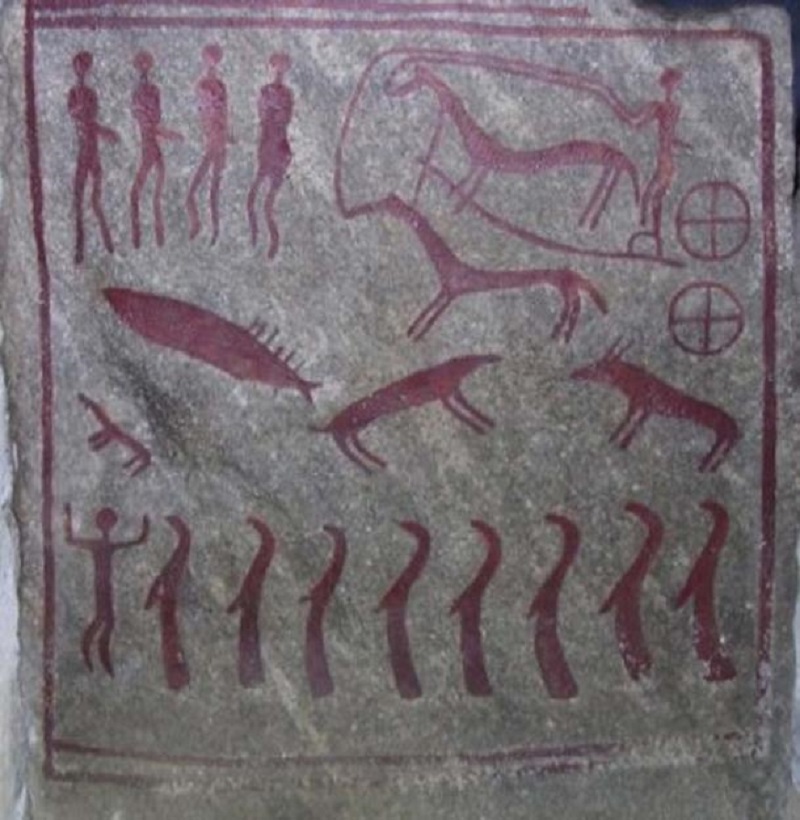
One of the ten stone slabs depicts a horse-drawn carriage with two four-spoke wheels (CC by SA 3.0)
One of the stone slabs is carved with human figures (eight people wearing long robes) ( CC by SA 3.0 )
The tomb was built around 1500 BC. The lack of useful artifacts to constrain the date makes it difficult to date the site with greater precision, but it generally dates to the Early Bronze Age. The Nordic Bronze Age was a period of major social changes and improvements in trade that made copper and tin more readily available, making bronze widely used. a European bronzemaking tradition that spread across the continent. Bronze first became popular in Scandinavia due to the availability of tin and copper through trade. It was also around this time that monumental mounds and mausoleums began to be built across Northern Europe, a trend of which the King’s Tomb is just one example. It is unclear whether the emergence of bronze allowed for increased complexity in society leading to the formation of architectural structures such as monumental mausoleums or whether the technology of bronze making simply making it easier for an already complex society to build tombs. Early theories of sociocultural evolution in Scandinavia suggested that the development or emergence of bronze making in European society allowed the formation of a class of experts and leaders who could separate themselves from the peasants as an elite class.
The stones of the tomb facing Kivik’s tomb (CC by SA 3.0)
Artwork done in the tomb shows connections with northern Germany and Denmark. The stones depict horses, ships and sun wheel-like symbols. This suggests that the people who built the burial site shared the same religious beliefs as cultures across Northern Europe at the time. Common religious beliefs show that the people of southern Sweden were also connected to areas further south in other ways, such as the technology they possessed.
Before the Bronze Age, the main material used to make tools and weapons in the region was flint. Flint knives are commonly found at Neolithic sites. Because bronze crafting required relatively well-trained professionals compared to stoneware production, there would not have been many at first and they may have needed support from wealthy members. in society as leaders to be trained. Chieftains will be able to use them to craft the tools needed to build monuments and prestige items such as ornaments, weapons, and ceremonial armor. Once the chieftains were patrons of well-trained bronze smiths, it became easier for them to build monumental structures such as mausoleums.
Whatever the reasons for the increase in social and technological complexity in Scandinavia during the Bronze Age, it shows that, although less advanced than the Bronze Age Aegean, it was advanced. more than traditional thinking. Scandinavians had carriages, monuments, and seagoing ships. As time passes, archeology will likely reveal increasingly surprising things about the Norse lands.
